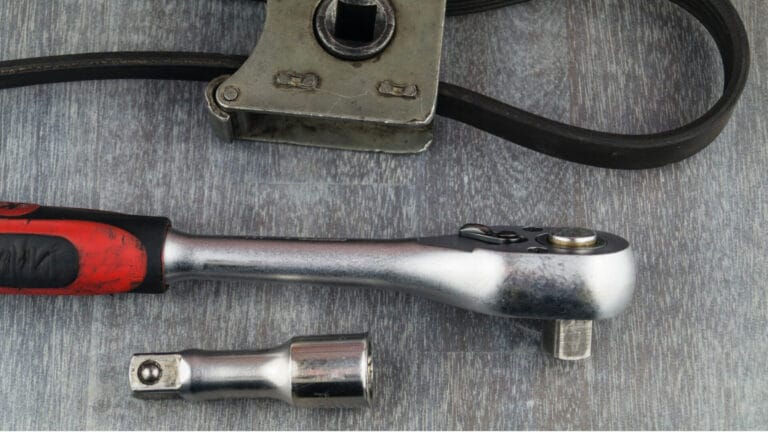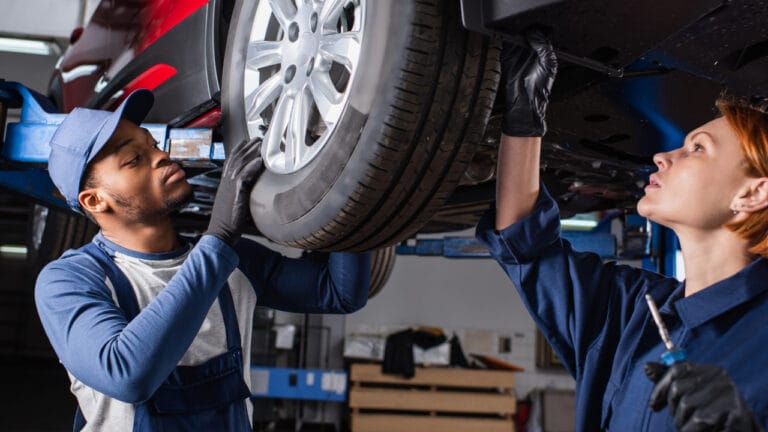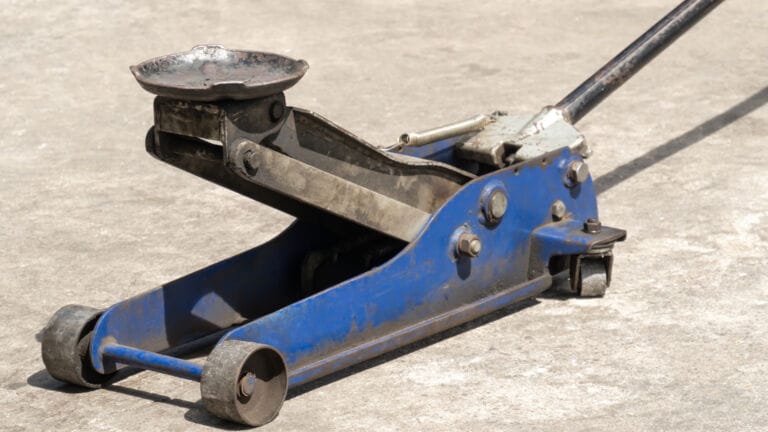What happens if you over torque head bolts
Head bolts, also known as cylinder head bolts, secure the cylinder head to the engine block, creating a tight seal that prevents leaks of coolant, oil, and compression gas.
When head bolts are tightened to the correct torque specifications, they provide the necessary clamping force that keeps the cylinder head securely in place on the engine block. What if it gets over-tightened? What happens if you over-torque head bolts? Does it get damaged?
When head bolts are over-torqued, it means that excessive force has been applied during the tightening process, exceeding the manufacturer’s recommended torque specifications. This misstep can turn your engine’s symphony into a discordant cacophony. From the risks of stretch bolts and stripped threads to the ominous threat of a cracked cylinder head or valve cover, over-torquing poses dangers that can silently sabotage your vehicle’s performance.

Let’s dissect the consequences of over-torquing head bolts and unravel the risks involved; you’ll gain insights into the telltale signs, the hidden stress fractures, and the potential engine miseries that can unfold when head bolts are tightened beyond their limits.
The Concept of Torque in Head Bolts
What Is Torque?
Torque is a measure of the rotational force applied to tighten fasteners, such as head bolts. It is usually measured in foot pounds (ft-lbs) or pound-force per square inch (psi) for bolted connections. It’s the power that twists and turns, ensuring every part plays its role without undue strain.
Importance Of Correct Torque
Proper torque is the guardian of longevity. It prevents unnecessary wear and tear and ultimately contributes to smoother and more reliable engine performance.
Imagine a scenario where head bolts are too loose – the seal weakens, and engine fluids can leak, causing inefficiencies and potential damage. Conversely, over-torquing, tightening beyond the recommended levels, can lead to a host of issues, like stripped threads, stressed components, and even a cracked cylinder head.
Understanding the basics of torquing set the stage for a deeper dive into the risks associated with over-torquing head bolts. As we explore further, you’ll gain insights into the potential pitfalls and, more importantly, the preventative measures to keep your engine humming in perfect harmony.
What Happens If You Over Torque Head Bolts
Maintaining the right torque is the sweet spot for engine integrity. It ensures that each head bolt plays its part – neither too tight nor too loose. Right force will ensure a bolt is snug enough to do its job without causing damage.
Now, if you keep tightening beyond what’s recommended, bad things can happen:
Bolt Breakage:
Head bolt is like a sturdy link in the chain holding your engine together. When you tighten it too much, you’re essentially stretching the bolt. As a result, it can snap just like a twig under too much pressure.
Metal Buckling:
Metal between the nut and bolt is like a thin sheet. When you tighten the nut, this sheet gets pressurized and holds everything in place. While torquing, if you somehow exceed the recommended torque, that thin metal sheet can’t handle and might give in and can buckle or warp, disrupting the smooth connection between components. This can lead to misalignments and affect the overall functioning of the engine.
Permanent Deformation:
Bolts are resilient, but if you push them too far beyond their limit, they can permanently change shape. This is like squishing a soft toy – once altered, it won’t bounce back to its original form. Similarly, when a bolt undergoes permanent deformation, it loses its structural integrity. It might still hold things together, but not as securely as it should. This compromises the overall stability and safety of the engine.

How did this happen?
The strength of a bolt is called tensile strength, measuring how much pulling it can handle before it gives up. There’s a point called the yield point where the bolt might permanently change shape. Below this is the elastic range (bounces back like elastic pants), and above is the plastic range (no bouncing back).
Torque specs usually aim for 70 to 95 percent of this yield point, keeping things in the safe elastic range. After this point, the bolt can still stretch a bit but eventually plateaus and weakens – that’s when you risk breaking it.
Think of it like a spring: you can stretch it a bit, but pulling too hard will not let it return to its original shape—that’s plastic deformation. So, follow torque specs like a recipe to keep your bolts and springs happy!
Over Torque Head Bolts- Causes & Solution
I just explained what happens when you over-toque head bolts. Now, I will tell you what causes this and how you can avoid it in the future. Understanding the common causes of over-torquing head bolts is essential to prevent this issue. Lack of proper torque specifications, incorrect torque wrench usage, use of old or damaged torque head bolt, and failure to follow the recommended torque sequence are some of the main contributors to over-torquing. Let us know in details.
Proper Torque Specifications
One common cause of over-torquing head bolts is the lack of proper torque specifications. When you don’t meet those specs, in fact, go above the limit, you are over-torquing. As a result, you can’t achieve the correct clamping force and provide engine components with the necessary integrity.

Prevention: You should research and understand the correct torque specifications and tighten each bolt following the manufacturer’s instructions.
Not Using Proper Tools
Using a torque wrench is like applying the right amount of force with a specialized tool. Imagine tightening a bolt with a regular wrench—it’s like stirring cake batter with a ladle; you won’t get the desired result. So, using the wrong torque wrench or setting incorrect torque values can result in over torque.
Additionally, incorrect torque wrench usage can also contribute to over-torquing head bolts. If a torque wrench is not calibrated properly, it can provide inaccurate torque readings, leading to over-torquing.
Prevention: Train and familiarize yourself with proper torque wrench usage, including calibration and torque setting techniques, to apply torque precisely and prevent over-torquing head bolts.
Use of Old or Damaged Bolts
Bolts have a lifespan, and using old or damaged ones is akin to wearing worn-out shoes – it’s just not reliable and increases the risk of over-torquing. Over time, bolts lose their clamping force due to wear or damage, requiring higher torque values to achieve the desired clamping force.
Additionally, reusing bolts with nicks or deformities without proper inspection may not withstand the intended force, increasing the risk of failure.
Prevention: To prevent such issues, you should replace old bolts with new head bolts that provide the necessary clamping force within the manufacturer’s torque specifications.
Failure to Follow the Recommended Torque Sequence
Torque sequence is like a dance routine for bolts – each step matters. Each engine design has a specific torque sequence that must be followed to ensure proper clamping force distribution. The torque sequence typically involves tightening bolts in a specific order, like a star pattern, with multiple passes, including final hand tightening, until we meet the specific torque value.
Neglecting the correct torque sequence results in uneven torque distribution during the final pass, which can lead to uneven clamping force, leaks, gasket failure, or engine damage.
Prevention: Tighten the bolt in a specific order to distribute force evenly following the manufacturer’s recommended torque sequence.
By understanding these issues, you’re not just tightening bolts – you’re ensuring the stability and longevity of your engine. Stick to the torque spec, use the right tools, opt for new gasket bolts, and follow the recommended sequence to ensure the process smoothly and avoid over-torquing pitfalls.
Step-by-Step Guide to Correct Over-Torqued Head Bolts
After knowing what happens if you over-torque head bolts, it’s time to know what to do next. Can you rectify it? What is the Solution?
Let’s know a detailed step-by-step guide:

Step One: Inspection
If you see any visible signs of damage to the over-torqued head bolts or the surrounding components, such as stripped bolt threads, deformities, or abnormalities, you should inspect the cylinder head bolt thoroughly.
Step Two: Torque Check
It’s time to find out how over-torque the head bolts are. Check the final torque with the proper tools and measure the gap. If the head bolts are not yet too damaged, and it’s not that much over-torqued, it’s fixable.
Step Three: Gradual Loosening:
Immediately loosen the head bolts incrementally, starting gradually from one end and working your way to the other. Make sure you are using a calibrated torque wrench to apply the torque evenly in the prescribed sequence.
Step Four: Visual Inspection:
After loosening the head bolts, check the threads and engine block again. If there is any damage, such as stretched or distorted thread, you can easily notice it now.
Step Five: Replace
However, if any components, such as bolts or threads, are irreversibly damaged, replace them with new ones. Ensure replacements meet the manufacturer’s specifications and torque requirements.
When to Seek Professional Help:
If the damage from the over-torquing head bolts is extensive or beyond your expertise, it’s better to seek expert help rather than waste time and effort.
Frequently Asked Question
What happens if cylinder head is not torqued properly?
If a cylinder head isn’t torqued properly, it can lead to serious engine issues. Insufficient torque allows the engine fluids to escape from head gasket and impair performance while over-torquing risks of head stud breakage, damaged threads, and warping.
What are the consequences of a torque tightening that is too strong?
The consequence of torque tightening that is too strong is mostly bolt breakage, stripped threads, and component deformation.
What happens if you use too much torque?
Using too much torque can put you at risk. Excessive force badly affects the structural integrity of important engine parts and potentially damages them. As a result, you will face consequences like bolt breakage, stripped threads, and permanent deformation.
Is it better to have more or less torque?
Having more or less, both torque power is not good to have; always try to meet the manufacturer’s specs torque for better performance and safety. Insufficient torque can make the components loosen and eventually cause leaks and inefficiencies; excessive torque can result in structural damage, stripped threads, or even component breakage.
The key is finding the balance that keeps components secure without causing unnecessary stress or damage.
Is having high torque good or bad?
Having high torque is not inherently good or bad; it depends on the context. In the automotive world, torque is necessary for engine performance and power. However, excessively high torque, if not managed properly, can lead to issues like component stress, breakage, or structural damage.
Closing Words
In conclusion, when you over-torque head bolts, the bolts are getting more pressure than they can handle. This will put overstress on the head bolts, causing the metal buckling and sometimes permanent deformation. It means no matter how much you try, the head bolts will never return to their originality, and you have to replace them with new ones.
So, if you suspect over torque, follow the steps I shared above or call for professional help to save time and effort, ensuring safety. To avoid such incidents in the future, pay attention to regular maintenance, and don’t forget to do inspections and repair and replace when needed.






